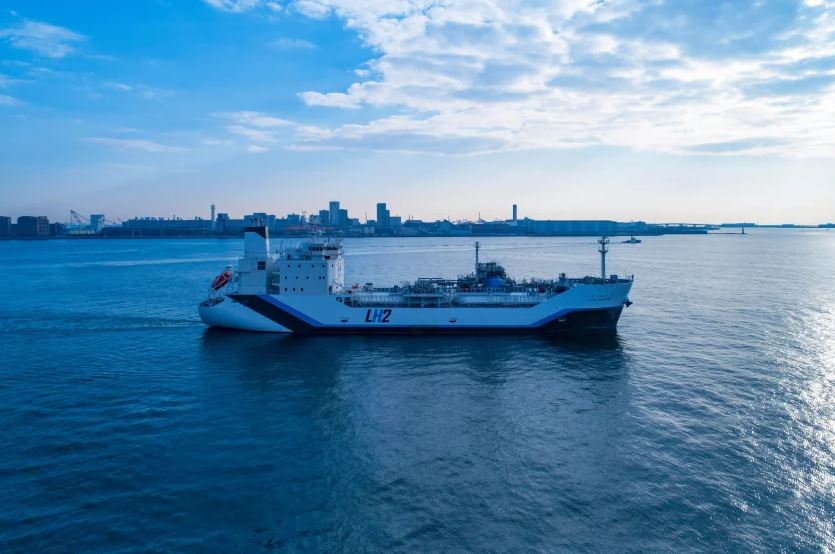The world’s first liquefied hydrogen carrier is to load its first cargo in Australia following a trip from Japan.
Japan’s Kawasaki Heavy Industries, the builder of Suiso Frontier, said in December that the hydrogen carrier had left the Port of Kobe towards Australia.
The vessel arrived at Victoria’s Port of Hastings on Friday, according to a statement by the Japanese-Australian venture producing hydrogen from brown coal, Hydrogen Energy Supply Chain (HESC).
During the pilot project, “pure hydrogen has been produced from Latrobe Valley coal and biomass via gasification, trucked to Hastings, cooled to -253 degrees and subsequently liquified to less than 800 times its gaseous volume to create highly valuable liquefied hydrogen,” HESC said.
The HESC project partners include KHI, J-Power, Iwatani, Marubeni, AGL Energy, and Sumitomo. Shell, Eneos and K-Line work as part of the Japanese portion of the project, HESC said.
According to HESC, the partners plan to produce about 225,000 tonnes of liquefied hydrogen (LH2) per year.
Suiso Frontier should return to Japan in February, KHI previously said.
ClassNK recently registered the vessel and it became the world’s first ship to be officially classified as a liquefied hydrogen carrier.
The Hydrogen Energy Supply-chain Technology Research Association, or HySTRA runs the marine liquefied hydrogen transport over more than 9,000 km as part of the pilot project.
Measuring 116 meters in length and weighing about 8,000 tonnes, the vessel features a 1,250-cbm capacity storage tank.
It would carry 75 tonnes of liquefied hydrogen during this trip, KHI previously said.
Shell/STASCO manages and operates the vessel that will transport hydrogen produced in Australia by J-Power, according to HySTRA.
Also, it would deliver the fuel to the liquefied hydrogen receiving terminal “Hy touch Kobe”, managed and operated by Iwatani.

